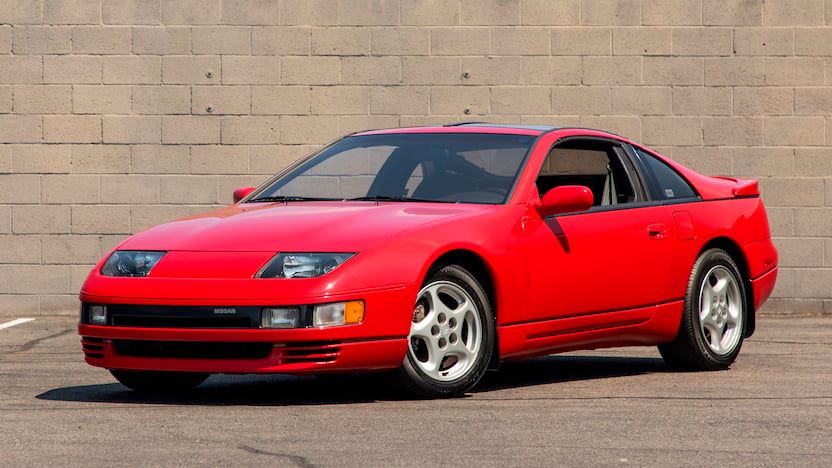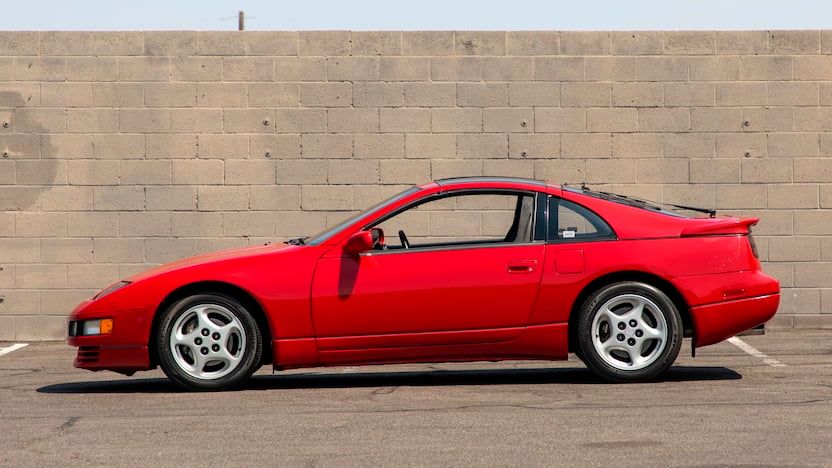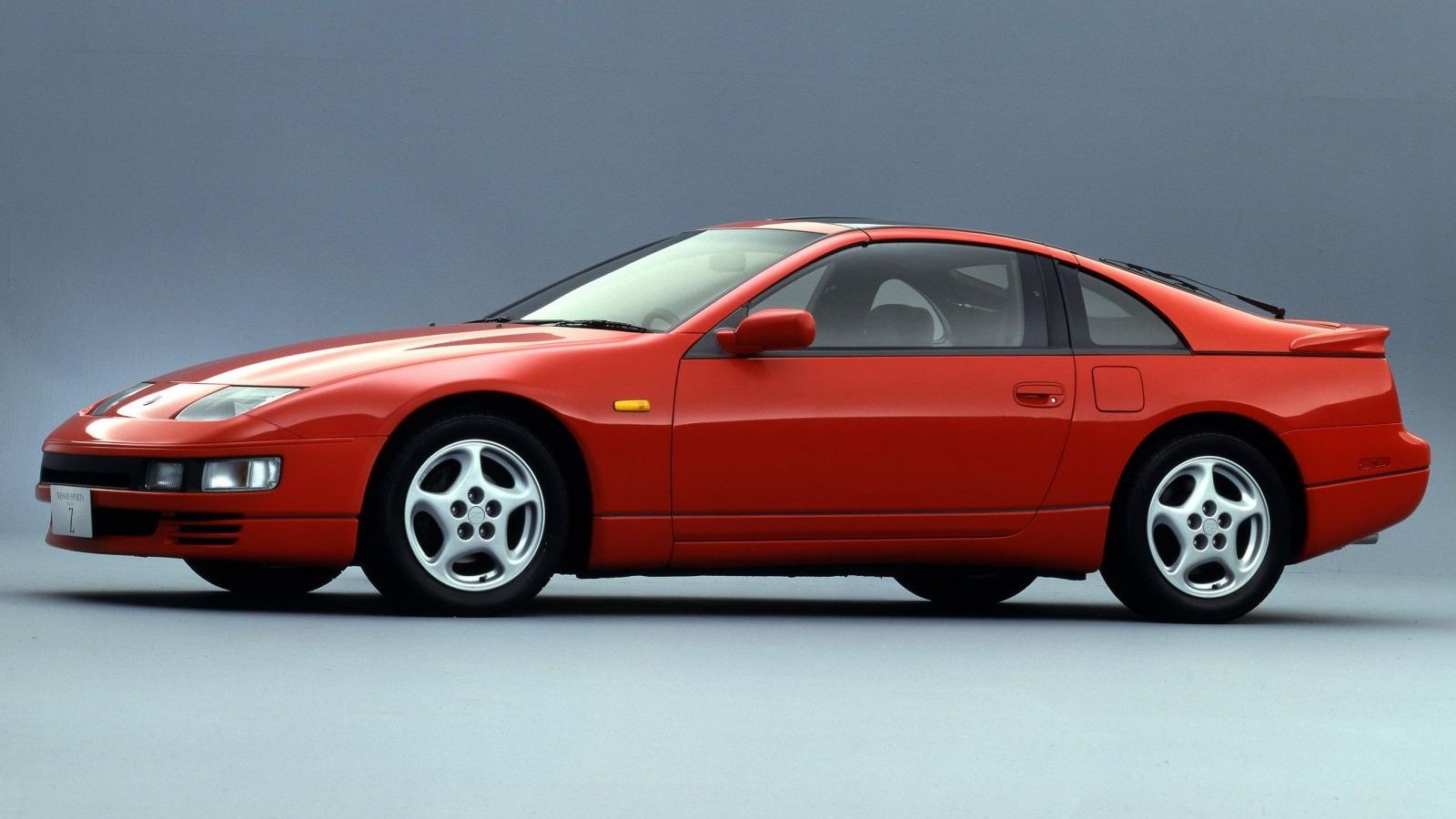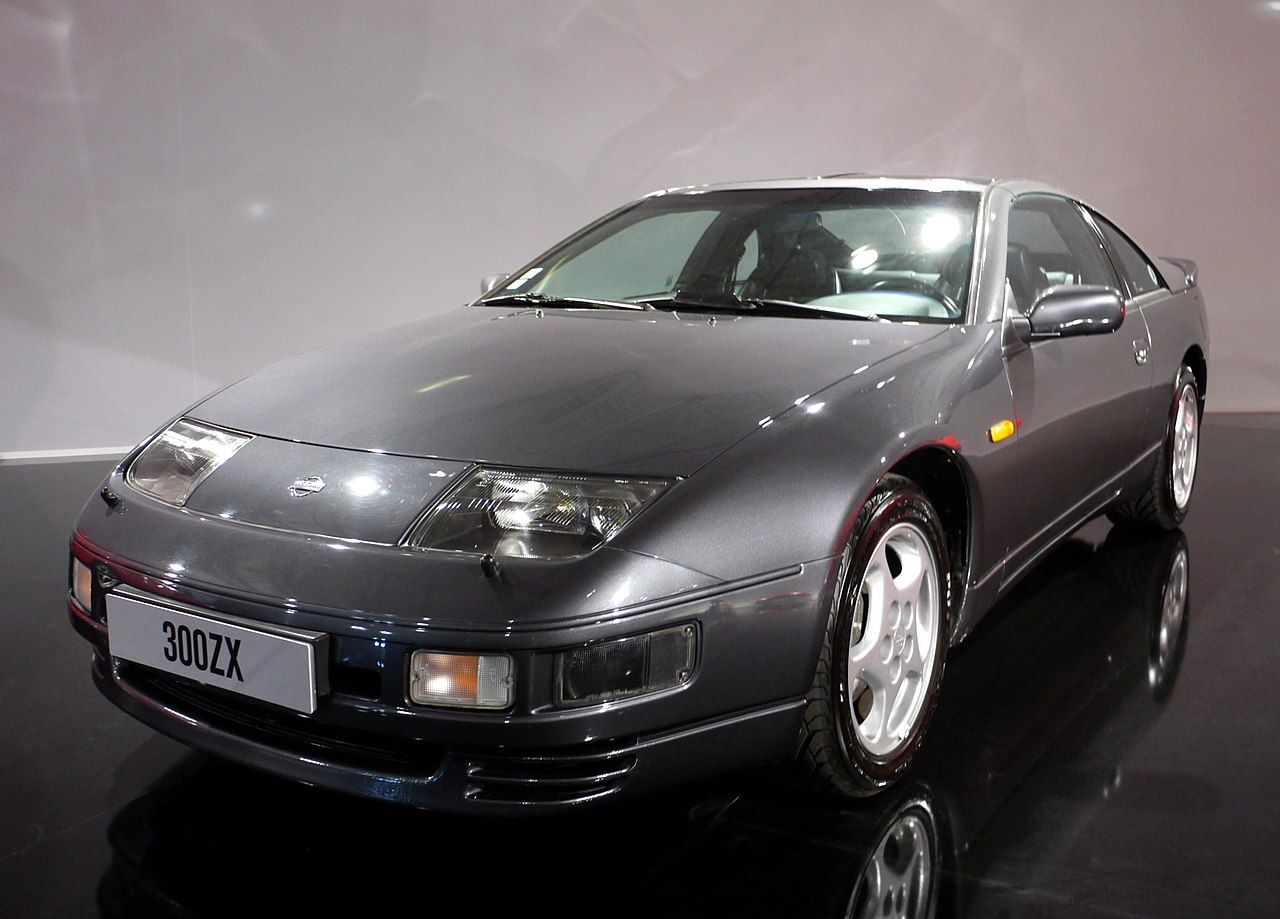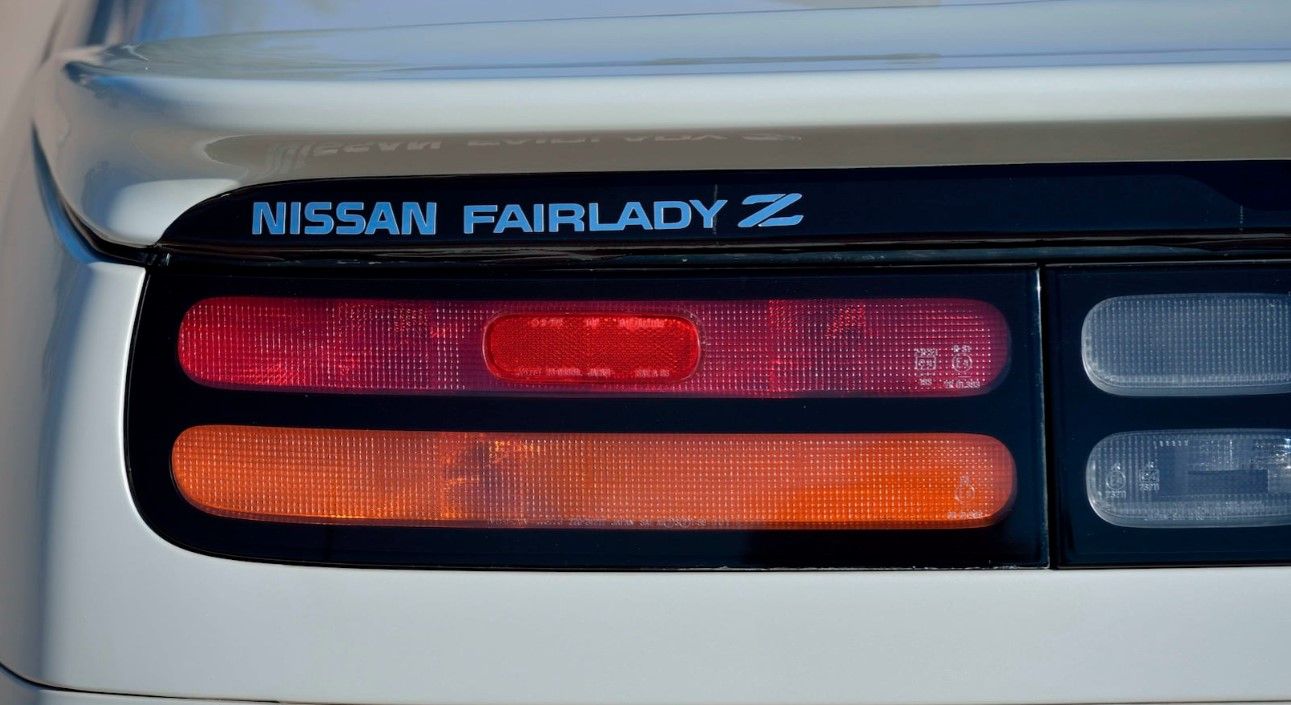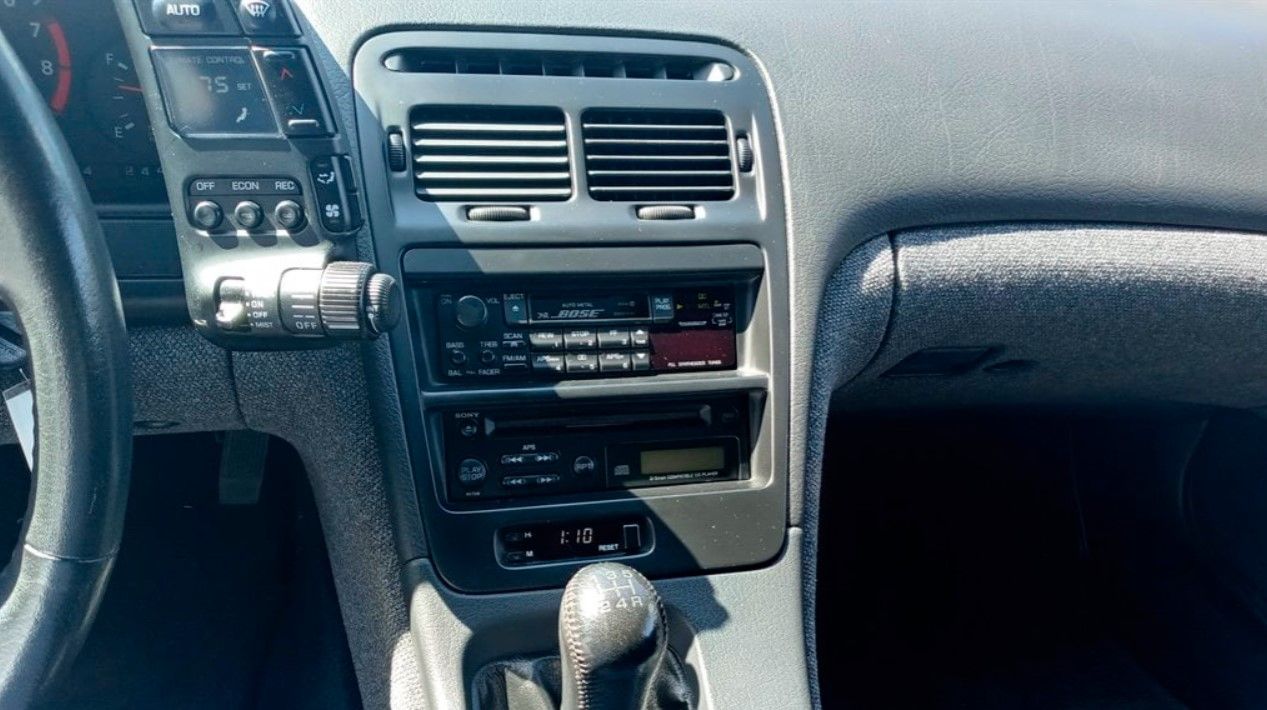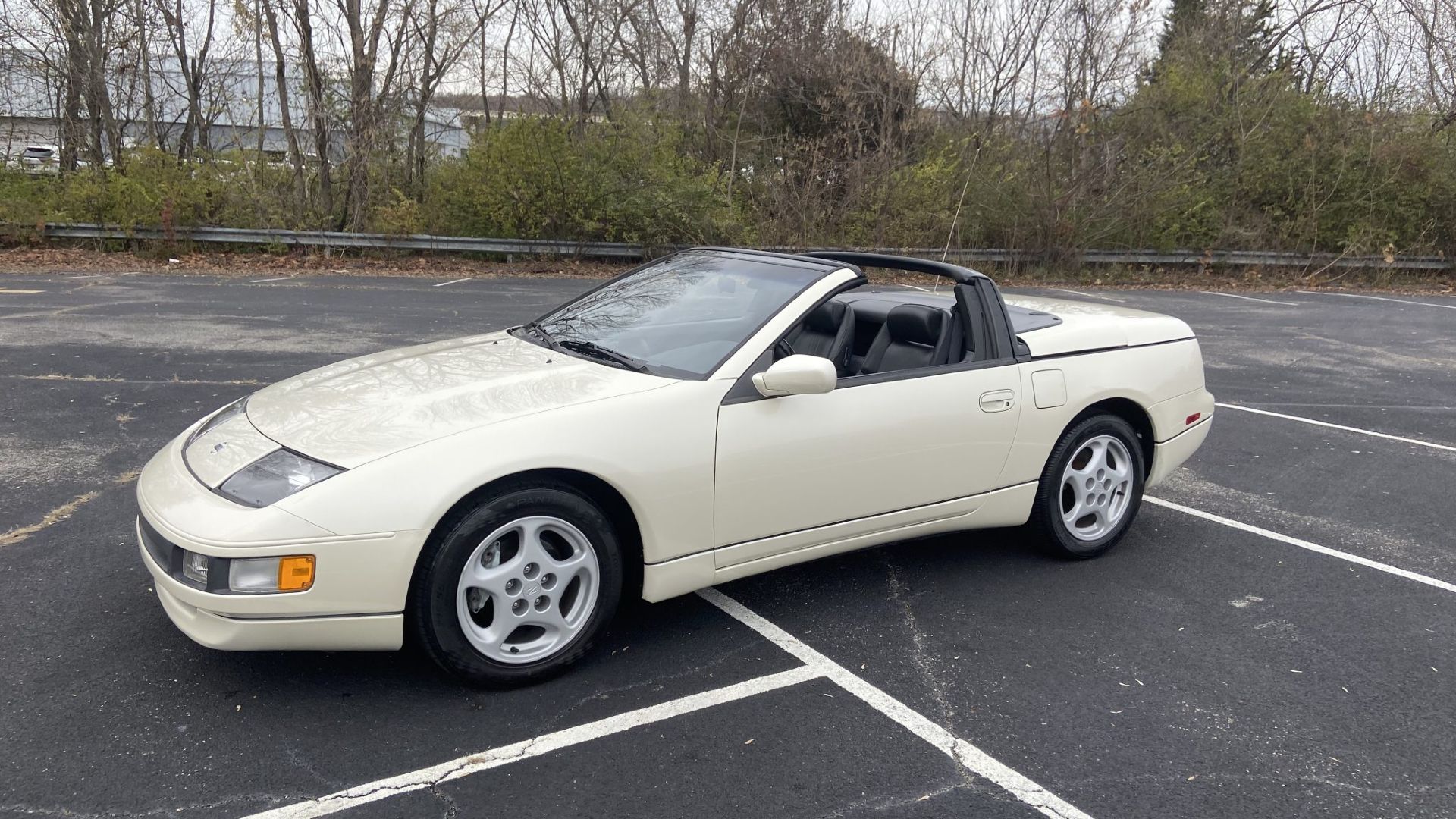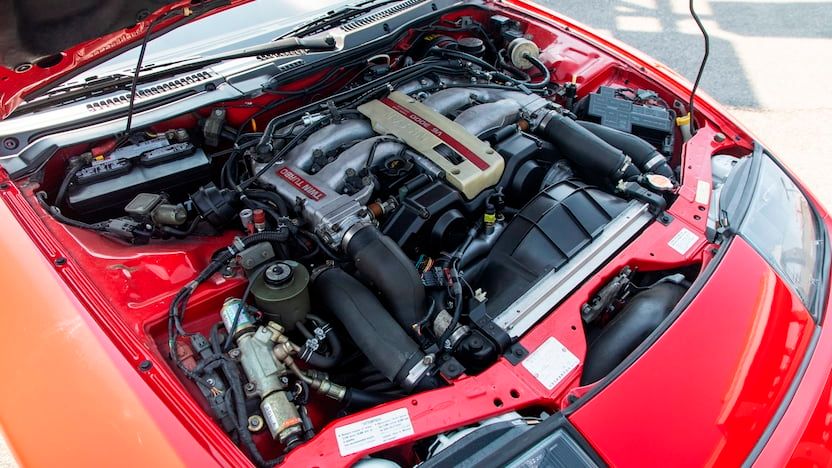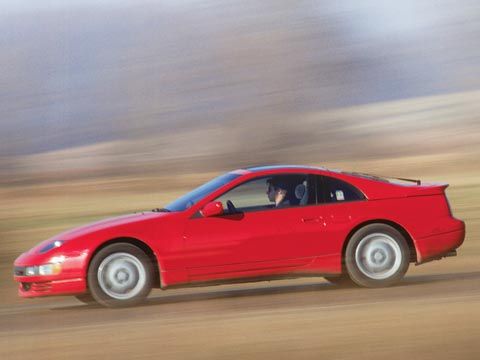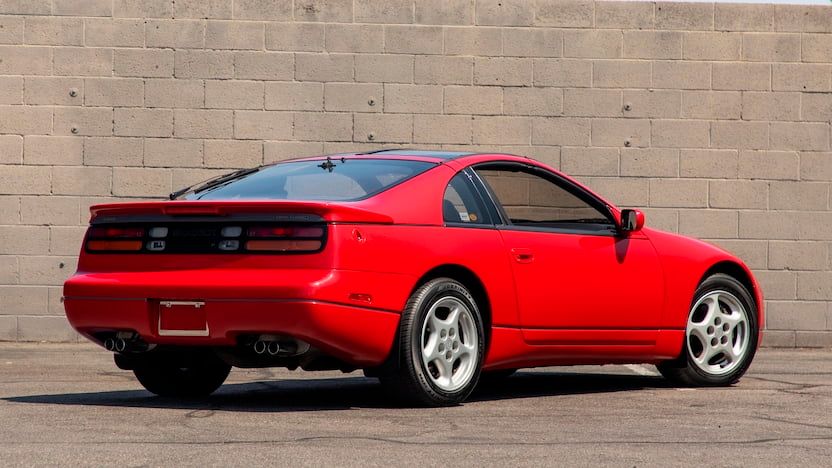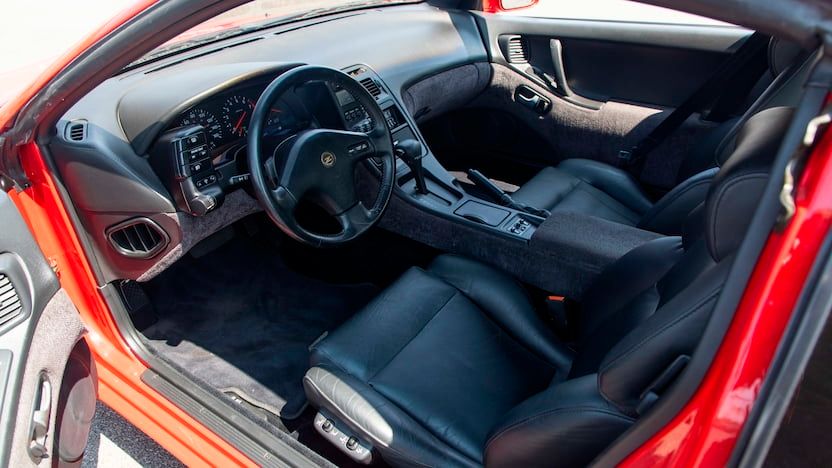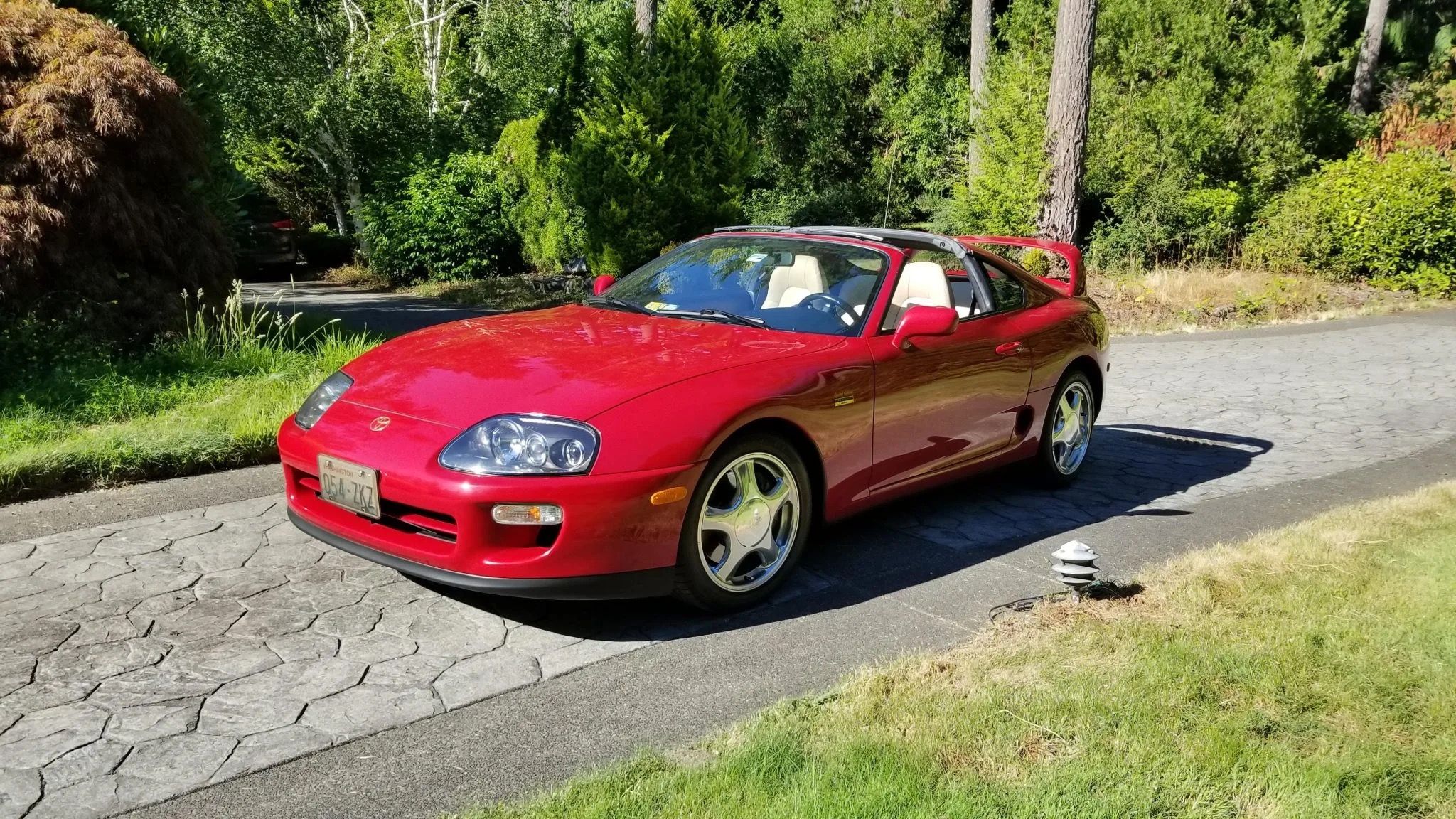Seen as one of the most advanced sports cars of the time, the Nissan 300zx Z32 remains just as popular today as it was nearly 30 years ago. Like the Toyota Supra of the same generation, the Z32 had two different runs: one in Japan from 1989 to 2000 and a shorter one in the North American market from 1990 to 1996.
Also, like Supra, the 300zx is one of a handful of JDM performance cars that is responsible for inspiring generations of racers who were born well after the car’s initial debut. But the good news is, unlike the MK4, the prices haven’t skyrocketed just yet on the Z32, and clean examples are available at reasonable prices.
1990-1996 Nissan 300ZX
- New Design
- Powerful turbo engine
- Great handling
- Model: 300ZX
- Engine:: 3.0L Normally Aspirated / 3.0L Twin Turbo V-6
- Power Output: 222-300 HP
- Torque: 198-283 LB-FT
- Transmission: 4-Speed Automatic / 5-Speed Automatic
- Driveline: Rear-Wheel Drive
- Twin turbo engine produces plenty of power
- Smooth short throw gear shifter in manual transmission cars
- Fighter jet feel to the interior
- Tight rear seats in 2+2 models
- MSRP priced out buyers near the end of the model run
- Timing belt and turbo problems
Nissan 300ZX Performance And Capability
The Z32 was a new design from Nissan engineers, getting final approval in 1986. Also called “Fairlady”, it carried over reworked versions of both engines from the previous car. The 3.0L (VG30DETT) Twin-turbocharged V-6 produced 300 horsepower and 283 pound-feet of torque and featured Garrett AiResearch parallel turbos and dual intercoolers. The normally aspirated version kept the same displacement at 3.0-liter (VG30DE) and produced 220 horsepower.
This was the first car to be marketed following the new 280-horsepower power ceiling put in place by JAMA (Japan Automobile Manufacturers Association) that remained in effect until 2004. An ultra-rare factory-backed Steven Millen (Stillen) tuned SMZ 300zx with 365 horsepower was sold through U.S. Nissan dealerships. Two transmissions were available in both trims – a four-speed automatic and a five-speed manual. Only rear-wheel drive is offered.
Model | Nissan 300zx Z32 |
Body | Standard/2+2 |
Trim | Turbo/Normally Aspirated |
Engine | 3.0L Twin Turbo V6/3.0L V6 |
Horsepower | 300hp/222hp |
Torque | 283 lb-ft/198 lb-ft |
Transmission | 5-speed manual/4-speed automatic |
Drivetrain | Rear-wheel drive |
The suspension was complex for the day, with the Turbo Zs featuring two-mode adjustable suspension that benefited from unequal-length control arms for the front and a rear multi-link setup similar to that of the 240sx. The Z32 also featured the Super HICAS (High Capacity Actively Controlled Steering) system which steered all four wheels and was first introduced on the R31 Nissan Skyline. This gave the vehicle plus or minus one degree of steering angle. Stopping power came from four-wheel disc brakes with large four-piston calipers grabbing 11-inch rotors which were huge for 1990.
0-60mph arrived in five seconds with the quarter mile coming up in 13.7 seconds at 102mph. The top speed was an electronically limited 155mph although 170mph wasn’t out of the question with that limiter removed. All this performance was enough to beat out more expensive competitors in several performance and handling tests. When compared to Sports cars like the Porsche 944, Corvette ZR-1, and the Acura NSX to name a few, the 300zx was looked at as a performance bargain with the twin-turbo version coming in at a base price of $33,000. This made it thousands less than its competitors in some cases.
Exterior Design
The Z32 was a complete redesign from the outgoing Z31. This version is wider, featuring more rounded edges versus the sharper lines as seen previously. Going away from the troublesome pop-up units, this Z sported large, fixed headlights, and big openings in the lower grille along with fog lights that wrap around the lower front bumper, making things look more European than JDM. From the rear, the wide stance and the dual exhaust look more Italian, similar to Ferraris of the day.
There are two body style variants. The standard car along with the 2+2 offered a rear seat and saw a 4.7-inch longer wheelbase and an overall length increase of 8.5 inches. A longer rear-quarter window and the fuel door located behind the rear wheel were the only exterior signs that the body was different. So, if you were ever looking at one of these Z cars and thought to yourself, “Why does that car look longer?”, that’s because it probably was.
Although the rear seats were added, they weren’t very useful to anyone larger than a child. Things were cramped with minimal headroom. 2+2 was only offered with the normally aspirated engine in the U.S., although this may have not been the case in other countries as Zs with the twin-turbo badge has been spotted, while sporting rear seats.
Most cars did come with removable T-tops while a rare version without the detachable glass roof was available after 1991. Just a couple of years later in 1993, a convertible model was offered and would become extremely popular as it would account for 20 percent of the Z32s sold that year.
Sales began to dip in the following years with the 1994-year model selling less than 10,000 cars which is a far cry from the 39,104 Zs sold in this generation’s first year. To help drum up interest in the car again, Nissan celebrated the car’s 25th anniversary and partnered with the race car driver, Steve Millen to build a specialty model.
The SMZ 300zx boosted power from the standard car by 65 horsepower and featured a unique grille, side skirts, and rear valance along with a large rear wing and custom wheels. Only 104 were built between 1995 and 1996. However, despite being covered by a factory warranty, the SMZ was never considered an official Nissan model.
Interior Quality And Technology
There’s not more a person could ask for once inside the cabin. Drivers are immediately greeted to a cockpit that is completely driver-centric. The seats were comfortable and supportive with supple leather seat surfaces. The Z’s dash layout felt more like a fighter jet than a sports car. Gauges are large and easy to read with thoughtfully placed controls accentuating the entire space. Storage space is plentiful which is surprising for a car this size.
1991 cars saw Nissan do away with manual climate controls for more modern electronic ones. These allowed control over airflow direction. Other improvements were an upgraded Bose stereo head unit, and a CD player option was added for both Twin Turbo and Normally Aspirated versions. Previously only buyers of the NA version were offered the CD player as an option.
1992 saw the biggest interior improvements for the generation as dashboard and door accent material changed from fabric to suede while T-top models got a power adjustable driver’s seat as standard equipment. The next three model years saw upgraded Bose as standard equipment, redesigned seatbelts and keyless entry added.
Safety
There wasn’t as huge an emphasis on passenger safety 30 years ago as automakers place to focus on now. 1991 was the first year that a driver’s side airbag was offered. It was made standard in 1992. Passenger airbags weren’t offered until 1994. Thankfully, they were also made of standard equipment. Early cars got an acceptable rating from the National Highway Traffic Safety Administration with 1991-1993 cars scoring a 3 out of 5 in front driver collision crash test ratings.
Main Competition
The Z32 faced stiff competition in the segment as it got deeper into its model run. Mazda’s RX7, Acura’s NSX, the Dodge Stealth RT Turbo, and the Chevy Corvette C4. But its toughest competition came from the same shore, as Toyota’s Supra offered comparable performance and handling as the Z.
Supra featured the powerful twin-turbo 2JZ engine which in its most powerful form (U.S. versions) produced 321 horsepower and 325 pound-feet of torque. This was enough to send the car to 60mph in good for today, 4.6 seconds, and down the quarter mile in 13.1 seconds at 109mph. Top speed was limited to 160mph, but Toyota engineers said with the limiter removed, 180mph was not out of the question. But inside, Supra was plain compared to the airplane cockpit feel of the 300zx, and it was expensive with a $36,000 start price putting it near the top of the segment.
Model | MSRP |
300zx Twin Turbo | $37,665 |
300zx 2+2 | $30,555 |
Toyota Supra Twin Turbo | $39,900 |
Here's what the current market for the base model 300ZX and 300ZX twin-turbo models looks like.
Near the end of its model run, the Twin Turbo Z faced the same issue as other competitors such as the Supra and the Acura NSX. While it initially was priced at around $30,000, its final model price ballooned to around $50,000 in the mid-1990s. That along with the rise in the popularity of SUVs contributed to the end of its run in North America.
These days, those in the market for a clean example should expect to pay close to that $50,000 figure for a pristine example. Thankfully, Twin Turbo cars in good shape can be found right around $20,000, which is still a lot of cars for the money, even today. Anybody in the market should act now as anything can set the market into a frenzy and send things skyrocketing into the six-figures.
FAQ
Q: How much does a 300zx cost?
Clean example twin turbos can go for as little as $20,000.
Q: Is the Nissan 300ZX a good car?
Overall, yes. However, there are known problems with the timing belts and turbos on higher mileage cars.
Q: Is 300ZX rare?
Not rare but not common. More than 80,000 cars were sold in the U.S from 1990-1996.
Q: Is the Nissan 300ZX a fast car?
Twin turbo models have an electronically limited top speed of 160mph

